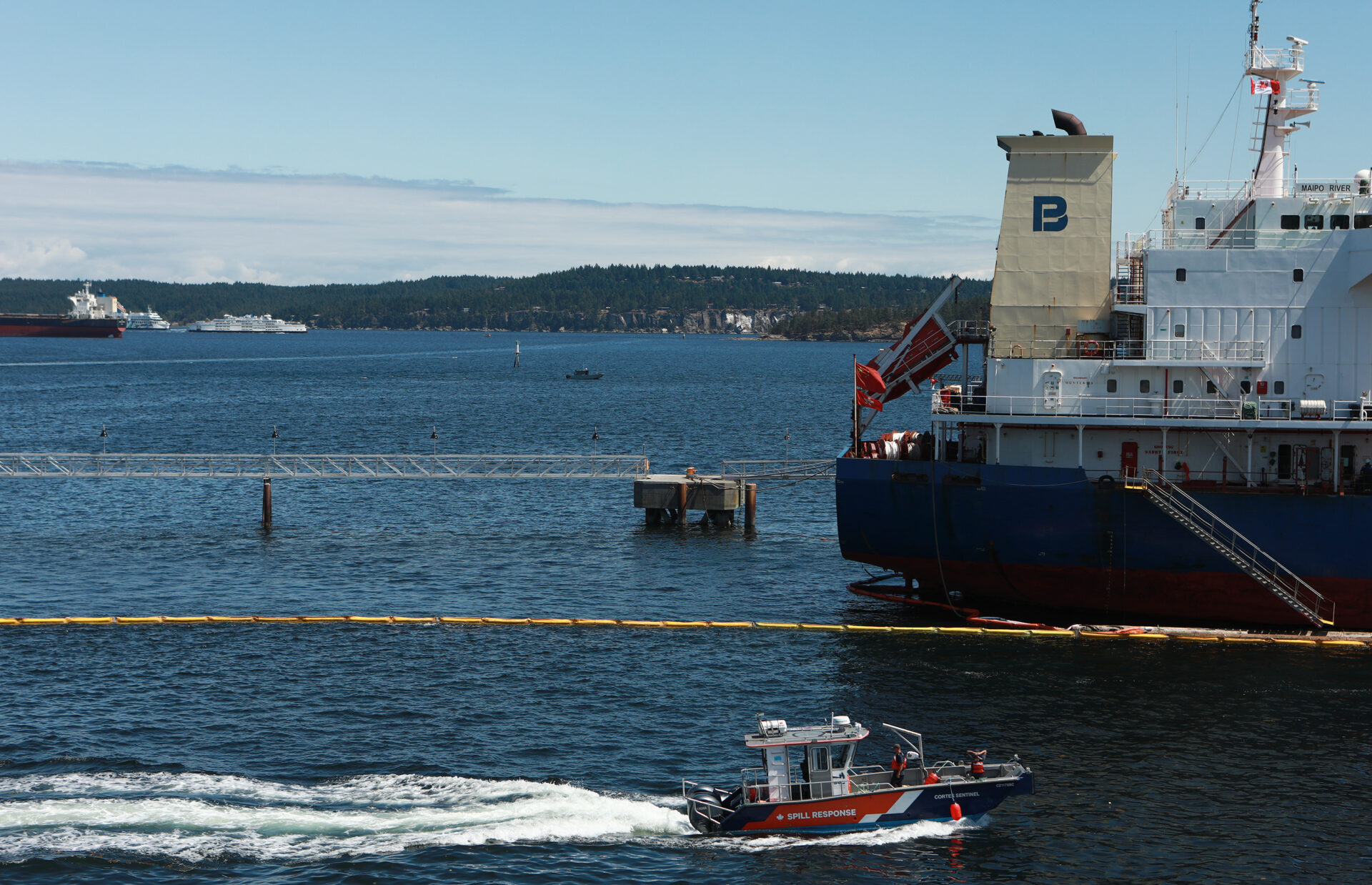In the early hours of the morning on July 26th, WCMRC received a Connect Rocket call from Pacific Basin Shipping Hong Kong reporting that a spill had occurred on a cargo ship at berth, the Maipo River, in Nanaimo Harbour. Initial details of the spill were sparse, with varying reports of the amount of product spilled.
What was known at the time was that the spill occurred upon the vessel deck and went through the scuppers during an internal fuel transfer. Thankfully, scupper plugs were in place and contained a significant amount of the spilled product on the deck. WCMRC crew and support staff were quickly mobilized, along with the decision to stand up an ICP (Incident Command Post) at WCMRC’s Nanaimo Response Base.
At 7:50 AM, spill response vessels initiated u-sweeps in areas where they had observed black blobs of product along with an oil sheen. Primary containment by the Sentinel 33 and Island Sentinel occurred after the u-sweep maneuvers laying out 200 feet of boom across the stern of the Maipo River. Aerial surveillance was conducted to determine the risk coming from the product moving due to the currents. To assist in aerial surveillance, WCMRC activated contractors to conduct drone flights.
At approximately 10:00 AM the Cortes Sentinel departed to begin deployment of Geographic Response Strategies. By 2:45 PM secondary containment of the vessel had been completed with a total of 2,750 feet of containment boom out on the water.
By the end of the day, the crew were left to tend to maintain the containment boom throughout the night, with no incidents being reported.
The following day, SCAT (Shoreline Cleanup and Assessment Technique) teams were contracted to survey shoreline with collaboration from Environment Canada and Climate Change, B.C. Environment and Climate Change Strategy and impacted First Nations.
With containment of the spilled product being carefully maintained and monitored, Unified Command’s response now moved towards the removal of approximately 24 logs, between 60 and 70 feet in length, caught between the casualty and containment boom, all in various degrees of oiled state.
As the responsibility for log removal fell on the Polluter, the Maipo River utilized its crane to lift and wrap the logs individually before transferring them to a barge. Final spilled product was removed by manual recovery (oil snares and sorbent pads), followed by the removal of 4,200 feet of boom for disposal. Vessels and equipment were then sent for decontamination and prepared back to a response ready state.
Coincidentally, about a year before this incident, training had taken place for a situation very similar to the one that occurred, involving the deployment of a primary containment at the adjacent berth (NAW C). During the exercise, crews practiced deploying enough boom to fully contain a large vessel in the event of a casualty, which mirrored the situation with the Maipo River. Upon examining the geography in and around Nanaimo Harbour, both for environmental protection and the location of our current Nanaimo Response Base, it was clear that one of the biggest risks to the estuary’s ecosystem would be a discharge at one of the berths.

